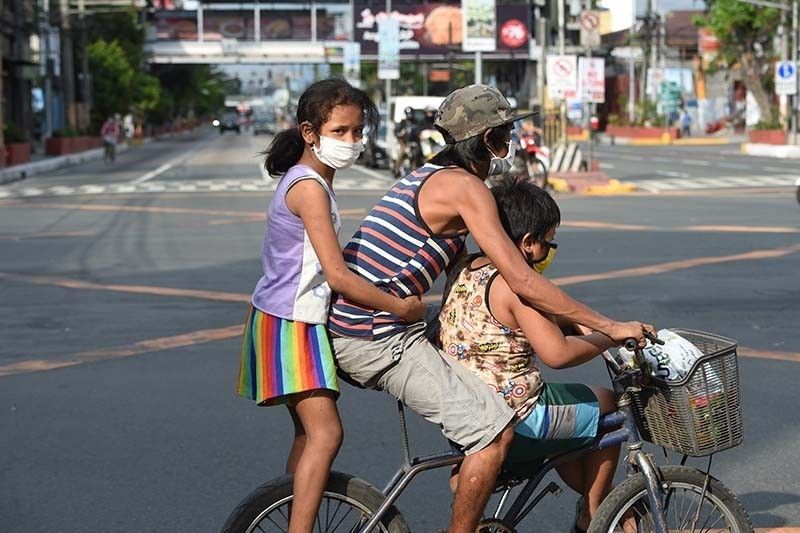10-year-olds and up allowed to go out in MGCQ areas in February

MANILA, Philippines (Updated 10:32 a.m.) — Minors who are ten years old or older are now allowed to go out of their homes in areas under Modified General Community Quarantine as the government slowly reopens the economy further this year.
This, after the government’s coronavirus task force approved the recommendation to ease age-based restrictions for areas under the more lenient MGCQ. The new rule will take effect beginning February 1.
Until then, only people aged 15 to 65 are permitted to go out in areas under General Community Quarantine and MGCQ, subject to the discretion of local governments. Most of the country is under MGCQ except for areas like Metro Manila where COVID-19 cases are higher.
“Any person below 10 years old and those who are over 65 years of age shall be required to remain in their residence at all times,” presidential spokesperson Harry Roque said Friday.
Local government units are enjoined to adopt the same relaxation of age restrictions for areas under GCQ.
The National Economic and Development Authority has long been pushing to allow more age groups to go out again, noting that 50% of economic activities are driven by family activities and hence, critical to the country’s recovery. This means that if kids are restricted from going out, essentially parents are also kept inside to take care of them.
Using Commission on Population data as of July 2020, around 69.7 million Filipinos are permitted out by the new policy. That represent 64.1% of the estimated 108.77 million Filipinos.
Being allowed to go out does not mean people will, though. Also, there are certain factors to consider including availability of transport options to ensure smooth mobility which has been lacking.
In one example, NEDA had said public transport inefficiency prevented around 50% of allowable workforce to go to work when lockdowns eased last year.
Curbs in December against COVID-19 spike
Last December, Health Secretary Francisco Duque III said the department was discouraging minors from leaving their homes. He made the statement then when the Department of the Interior and Local Government said that minors in areas under GCQ may soon be allowed to go to shopping centers as long as they are accompanied by their parents.
According to the World Health Organization in September, children under 18 years old represent about 8.5% of reported cases worldwide, with relatively few deaths compared to other age groups and usually mild disease.
Cases of critical illness have been also reported but pre-existing medical conditions have been suggested as a risk factor for severe disease and intensive care admission in children.
Over half a million people have been infected with COVID-19 in the Philippines with 10,116 fatalities nearly a year since authorities detected the country’s first known case.
The government is scrambling to lock in supplies of COVID-19 vaccines in a bid to vaccinate 50 to 70 million people this year.
- Latest
- Trending































